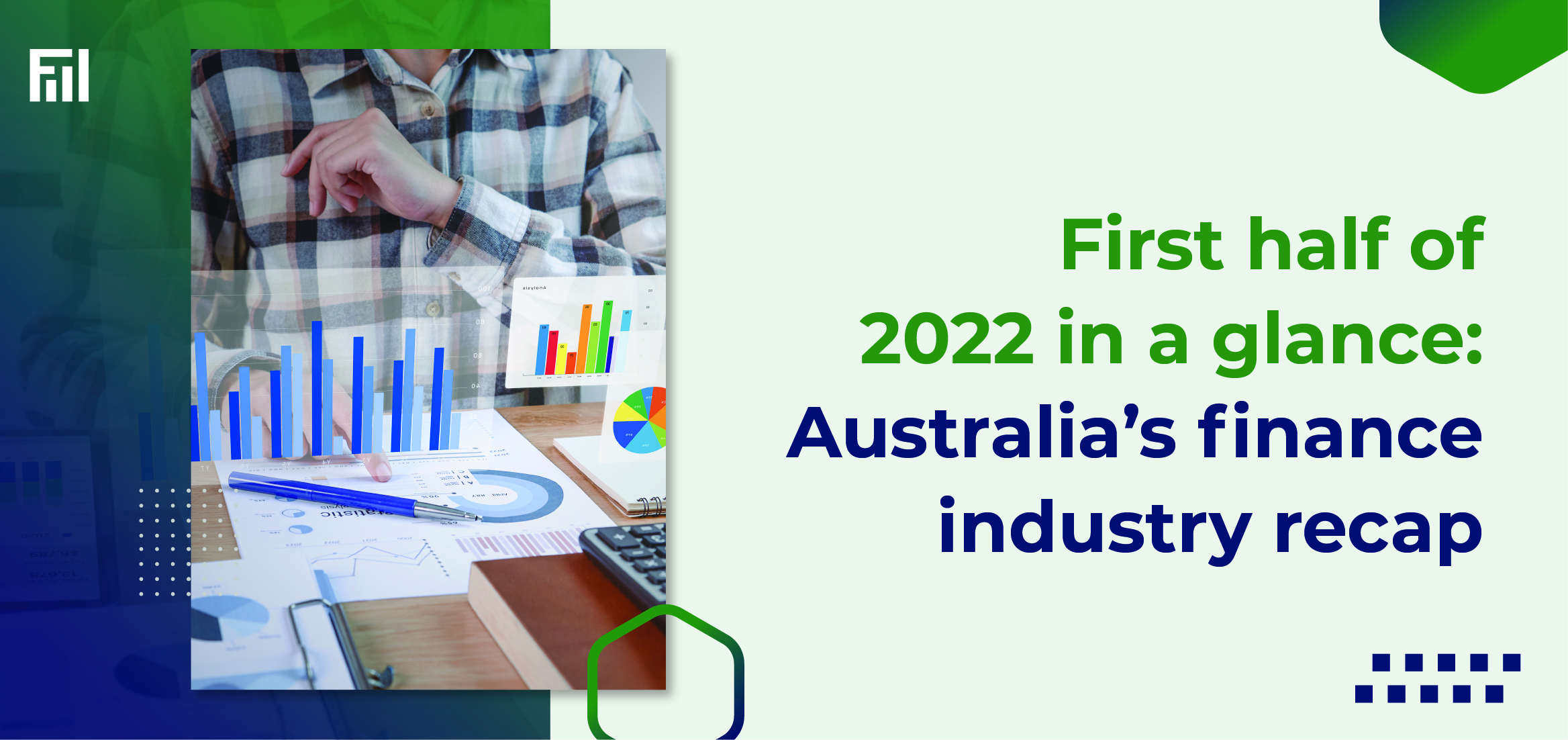Halfway into 2022 and we can already say that this year has been eventful for the finance industry with major updates as well as issues including inflation, regulatory changes and more. Before you plan your next move, it might be worth reviewing what has happened in the finance industry so far.
Rising prices
The annual inflation rate in Australia increased to 5.1% in the first quarter of 2022 from 3.5% in the fourth quarter of 2021, exceeding market expectations of 4.6% and representing the highest reading since the Goods and Services Tax was implemented in the early 2000s. This increase was caused by rising building costs and soaring fuel prices.
The cost of food and non-alcoholic beverages (4.3% from 1.9%), alcohol and tobacco (1.8% from 1.1%), housing (6.7% from 4%), furnishings (4.9% from 3.6%), recreation (3% from 2.1 %), health (3.5% from 3.3%), and insurance and financial services all saw an increase, putting pressures on consumers.
As the world grapples with rising fuel prices, floods across the east coast are also expected to contribute to the increase by pushing up prices for vegetables and fruit. Later in July, the government is likely to release official data on consumer price inflation for the second quarter, which is anticipated to reveal another increase to 6% or more. Core inflation is also anticipated to pick up speed past 4% and move further away from the Reserve Bank of Australia’s (RBA) target range of 2-3%.
Interest rate hikes
Following rising inflation, Australia's central bank raises interest rates for the third consecutive month in July 2022.
The Reserve Bank of Australia increased its cash rate by 50 basis points to 1.35 percent as it wrapped off its July policy meeting, totaling 125 basis points of increases since May and the quickest sequence of increases since 1994.
With the unemployment rate at a five-decade low of 3.9 percent and the number of open positions at an all-time high, RBA Governor Philip Lowe was optimistic the economy could weather the pressures. Household demand has also fared well, in part because of excess savings amassed during the pandemic lockdowns, totaling 260 billion Australian dollars ($178.59 billion).
Record-breaking unemployment rate
As hiring exceeded all forecasts, Australia's unemployment rate fell to a 48-year low in June. Record-high job openings signalled that the labour market was poised to tighten even further, which may contribute to higher interest rate hikes.
The unemployment rate decreased from 3.9 to 3.5%, far below the forecasted level of 3.8 percent and the lowest level since August 1974. The decline occurred despite an increase in job seekers, with the participation rate reaching a record high of 66.8%.
Indicating that wage growth will pick up speed over time, the underutilisation rate, which includes underemployment and unemployment, maintained at 9.6%, its lowest level since 1982. While layoffs were relatively few, the number of unemployed also decreased by an exceptionally big 54,300.
Expansion of first home buyer schemes
Australia's 2022 budget announced in April provided an expansion for Home Guarantee Scheme to 50,000 places every year. This program includes a variety of projects aimed at helping first-time buyers, regional buyers, and those searching for family homes.
The number of places available under First Home Guarantee program expanded from 10,000 to 35,000. The First Home Guarantee program allows first-time home buyers to purchase a home without having to pay lenders' mortgage insurance and with a 5% deposit.
A new Regional Home Guarantee program also provided 10,000 places for people buying new houses in the region. Non-first-time home buyers are also eligible for this scheme. Meanwhile, a total of 5000 guarantees were included in the budget under the Family Home Guarantee, which is aimed at helping single-parent families.
The First Home Super Saver Scheme (FHSSS) also had an update. This scheme aims to encourage Australians to save for their first home by allowing them to establish a deposit in superannuation and receive a tax break. When compared to saving in a conventional bank account, the FHSSS can increase the amount of money saved for a deposit by at least 30% for most people.
Plan your next financial move with us
As uncertain the markets may be, we at Fastgrow Finance can help you get the best financial solutions for you to help you achieve your goals. We understand the market and we keep updated with all the national and global events that can have an impact on you. This is so we can provide you with reliable services and help you achieve your financial goal.
Please get in touch with us directly. Our knowledgeable advisors and trusted brokers will work with you to determine your objectives and screen and help select a provider that meets your needs.
Contact us through the following channels:
- Phone: (02) 9630 3142
- Email: [email protected]

